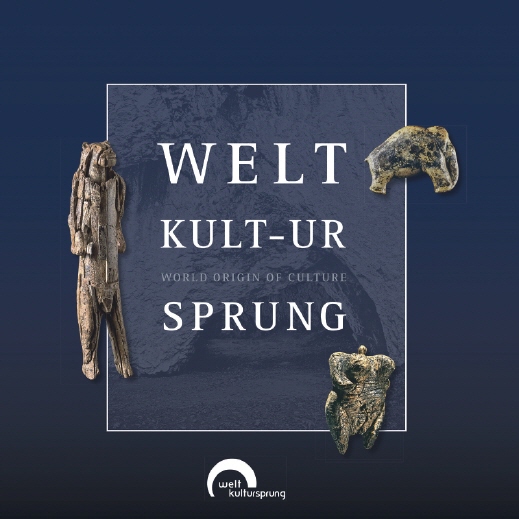Welt Kult-ur Sprung - World origin of culture
40,000 years ago, on the southern edge of the Swabian Alb, unique representations of animals and humans as well as musical instruments made of bird bones and mammoth ivory were created by human hands. These finds come from a total of four caves in the Ach and Lone valleys. They are the oldest examples of figurative art and music and are an expression of a comprehensive cultural change of mankind. Through these finds, the development of symbolic thinking and the meaning of creativity can be concretely grasped.
The illustrated book “Weltkultursprung” presents the different sites and exhibition locations in this unique discovery region (Südrand Schwäbische Alb) for the Paleolithic Age and describes the main works of ice age art and music.
On 9 July 2017, these sites were awarded the title “UNESCO World Cultural Heritage” due to their outstanding importance and uniqueness.
Published by: Stefanie Kölbl, Georg Hiller / Urgeschichtliches Museum Blaubeuren
Translations: Katrin Kleemann und Iris Trautmann

- Description
- Beschreibung deutsch
40,000 years ago, on the southern edge of the Swabian Alb, unique representations of animals and humans as well as musical instruments made of bird bones and mammoth ivory were created by human hands. These finds come from a total of four caves in the Ach and Lone valleys. They are the oldest examples of figurative art and music and are an expression of a comprehensive cultural change of mankind. Through these finds, the development of symbolic thinking and the meaning of creativity can be concretely grasped.
The illustrated book „Weltkultursprung“ presents the different sites and exhibition locations in this unique discovery region (Südrand Schwäbische Alb) for the Paleolithic Age and describes the main works of ice age art and music.
On 9 July 2017, these sites were awarded the title „UNESCO World Cultural Heritage“ due to their outstanding importance and uniqueness.
Vor 40.000 Jahren entstanden am Südrand der Schwäbischen Alb von Menschenhand einmalige Tier- und Menschendarstellungen sowie Musikinstrumente aus Vogelknochen und Mammutelfenbein. Diese Fundstücke stammen aus insgesamt vier Höhlen im Ach- und Lonetal. Es sind die ältesten Belege für figürliche Kunst und Musik und sind Ausdruck eines umfassenden kulturellen Wandels der Menschheit. Über diese Fundstücke werden die Entwicklung von symbolischem Denken und die Bedeutung von Kreativität konkret fassbar.
Der Bildband »Weltkultursprung« stellt die verschiedenen Fundstellen und Ausstellungsorte in dieser einmaligen Fundregion (Südrand Schwäbische Alb) für die Altsteinzeit vor und beschreibt die Hauptwerke der Eiszeitkunst und der Musik.
Am 9. Juli 2017 wurden diese Fundorte aufgrund ihrer herausragenden Bedeutung und Einzigartigkeit nun mit dem Prädikat »UNESCO-Weltkulturerbe« ausgezeichnet.
Herausgeber: Stefanie Kölbl, Georg Hiller / Urgeschichtliches Museum Blaubeuren
Übersetzung: Katrin Kleemann und Iris Trautmann
- Details
| language: | english and german |
| year: | 2019 |
| pages: | 112 |
| format: | 24,5 x 24,5 cm |
| illustrations: | many photographs |
| cover: | hardbound |
